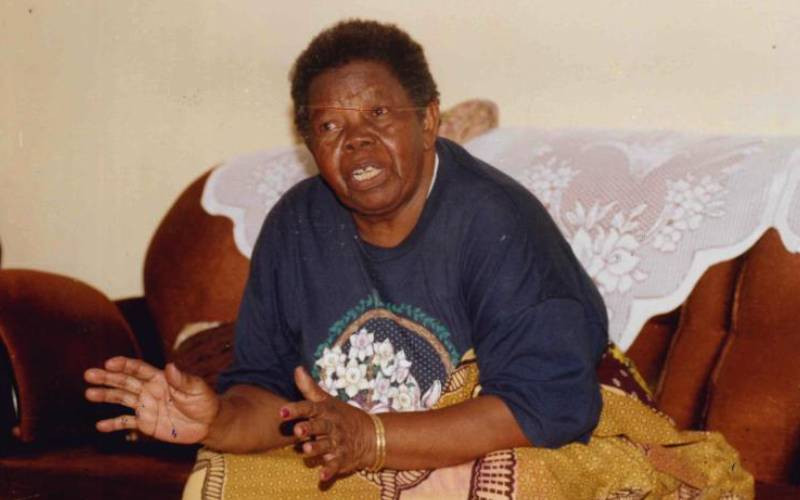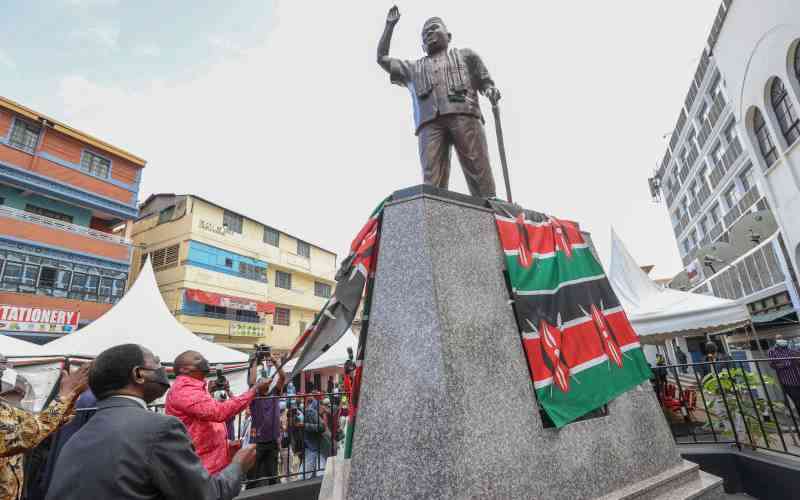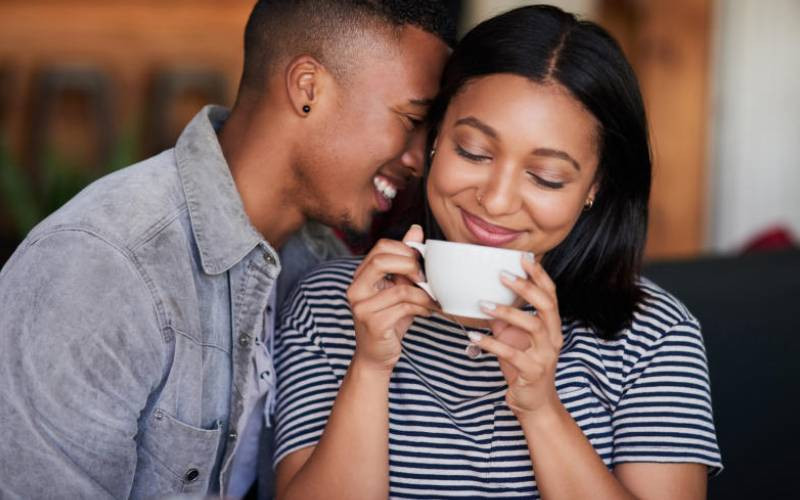
Early January 50 years ago, hundreds of mourners congregated at Vishakani village in Kaloleni, Kilifi County, to bid farewell to a great son of Kenya, Ronald Ngala.
At the time of his death, he was Cabinet minister for Power and Communications in the government of President Mzee Jomo Kenyatta.
Here is the chronology of events leading to his journey to where William Shakespeare described as the "undiscovered country whose bourn no traveler returns".
On Jamhuri Day, December 12, 1972, the minister left Nairobi for his home at the Coast driven by his driver in the official government Mercedes.
That evening, State-owned and only broadcaster Voice of Kenya (VoK), carried a bulletin that the minister had been involved in a road accident travelling from his home to Nairobi and admitted at the Kenyatta National Hospital. The State broadcaster later changed tune to say he had been travelling from Nairobi to Coast and not the other way round!
Non-State media - East African Standard and Nation newspapers - reported that the minister had been admitted to the hospital's Intensive Care Unit with head and chest injuries sustained during the accident.
The following day, the hospital administrator Darius Mbela, who years later was appointed a Cabinet minister, refuted reports in the newspapers.
He said: "Contrary to the reports, it appears the minister had suffered no head injuries. Ultrasonic tests on his head have shown a normal state with no signs of internal injuries."
Mbela held a press conference at the hospital where he displayed X-ray pictures showing that the minister had no internal injuries. Journalists have no training of what an X-ray shows let alone tell from which patient it was taken from!
Accompanying the hospital spokesman was one Prof Fujita flown in from Japan who told the media that the X-ray pictures on internal conditions of the injured minister "showed no signs of internal injuries of his head, chest and legs".
The hospital administrator emphasised that doctors and a "number of specialists" were keeping constant watch on the minister's heartbeat "on the screens of the transmittal equipment" as well as keeping track of his intravenous fluids equipment.

He said the hospital was "unhappy with public and press speculation" on the condition of the minister. "I have spoken to him," he said. "He is speaking sensibly and is fully conscious. If there had been internal bleeding, he would not be talking and he would be confused."
He concluded by saying that the minister's condition had been "mainly due to shock" of the accident. "He has not slept soundly the previous night so the doctors have advised more rest. He will not be long in the hospital".
On further probing from the media, the visibly uncomfortable hospital administrator said as he hurriedly conclude the session: "Information on possible internal injuries would be conclusive only after a 48 hours of observation."
Less than two weeks later on Christmas Day, the minister was pronounced dead. There was speculation all over the place. As they say, where there is smoke there is fire.
The bee story
As is usual with such mysteries, the government set up an inquest to "find" out what transpired.
The inquest gazette notice was signed by the deputy public prosecutor on February 19, 1973. It would be presided over by Chief Magistrate JS Sachdeva who soon after was promoted to a judge.
The inquest was told that on the fateful day - December 12 - Ngala was expected at Uhuru Park where President Jomo Kenyatta would lead the nation at the Independence commemorations.
The inquest heard that Ngala changed his mind at the last minute and decided to instead travel to his home at the Coast because his 22-year-old "second wife" refused to fly to Nairobi to accompany him at the national fete. The said "second wife" was never called to authenticate the allegation.
A more intriguing story was told by the minister's official police driver. He said he had been driving at high speed. Suddenly at Konza, about 60 kilometres on the Nairobi-Mombasa highway, a swarm of bees entered the vehicle causing him to lose control and roll three times.

The police driver went on to tell the inquest that some "good Samaritan" appeared from behind and on recognising it was Ngala in the back seat, offered to take him to hospital in Machakos town. The said "good Samaritan" wasn't "found" to testify at the inquiry.
The driver proceeded to testify that at the hospital, an Israeli doctor concluded that the minister had severe head injuries and instructed that he be taken to Kenyatta National Hospital where the injuries would be handled. The said Israeli doctor didn't appear at the inquest.
At Kenyatta National Hospital, the inquest was told, Ngala was attended by a team of 17 doctors led by one William Frindel who the government flew in from Canada.
The Canadian told the inquest that the minister had a concussion, a medical term for bleeding from the brain, which gave him moments of apparent recovery. He said the doctors couldn't stop the bleeding from the brain which eventually damaged his heart, kidneys and liver.
But the government pathologists who supervised the autopsy of the minister had a different version altogether. He said the minister might have died from a "chest injury caused by a blunt instrument".
The following day, DPP James Karugu complained that the media had misquoted the government pathologist in using the words "blunt weapon" instead of "blunt instrument". He said: "Use of words blunt weapon can give very wrong ideas". Chief Magistrate Sachdeva agreed and gave a tongue-lashing to the media. The inquest concluded there had been no foul play in the death.
Dark forces
Years later in 2004, the minister's widow Esther Mwenda told a women delegation visiting her at the family's Kilifi home that two weeks before his demise, her husband had told her about some "dark forces" haunting him. She promised to "very soon drop a bombshell." She repeated the same words 13 years later at the 45th anniversary of her husband's death in 2017.
She died two years ago aged 90, but did not make known the "dark forces" who snatched away her loved one.
 The Standard Group Plc is a multi-media organization with investments in media platforms spanning newspaper print
operations, television, radio broadcasting, digital and online services. The Standard Group is recognized as a
leading multi-media house in Kenya with a key influence in matters of national and international interest.
The Standard Group Plc is a multi-media organization with investments in media platforms spanning newspaper print
operations, television, radio broadcasting, digital and online services. The Standard Group is recognized as a
leading multi-media house in Kenya with a key influence in matters of national and international interest.










